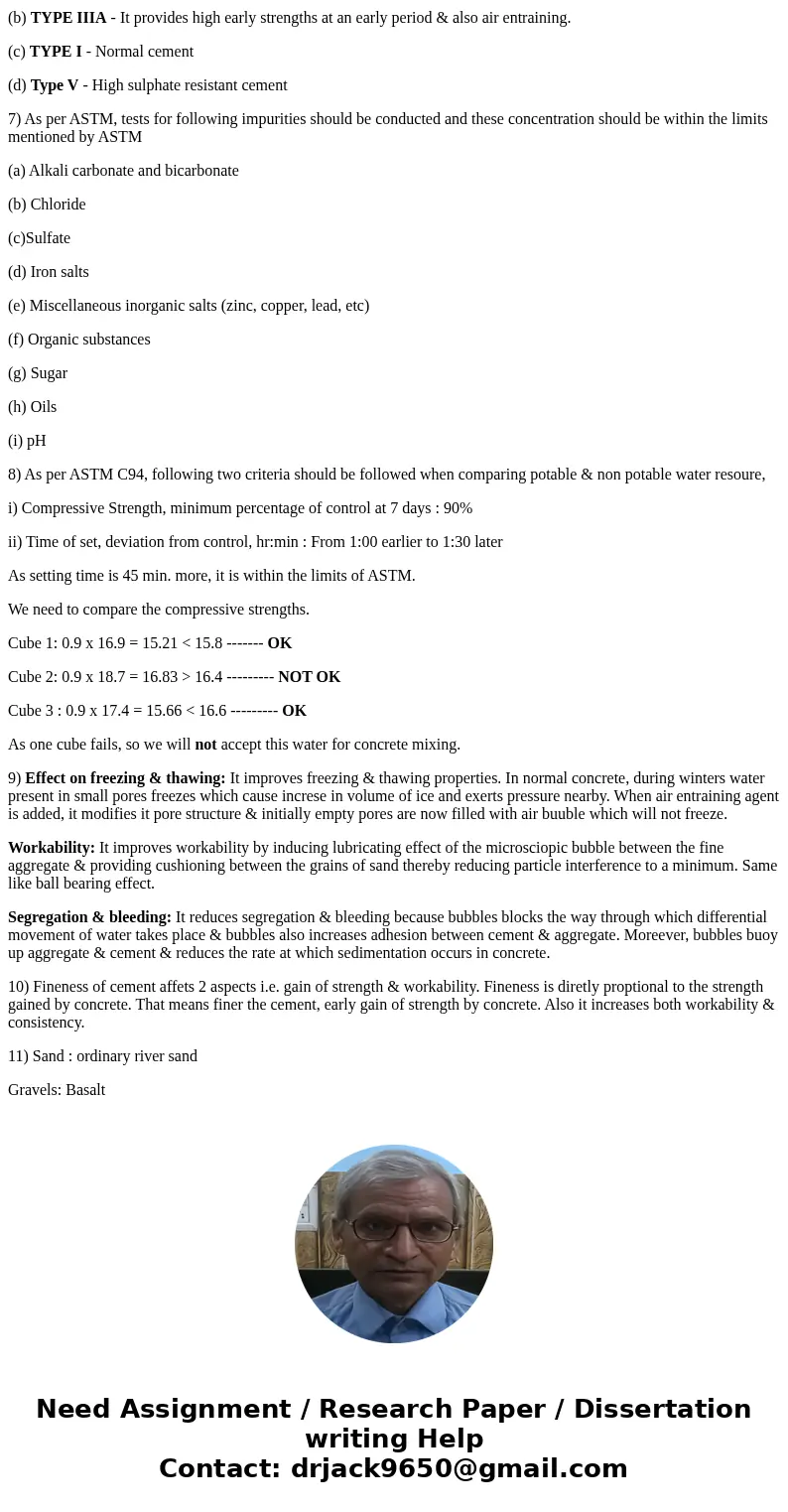What is a false set and flash set of portland cement 5 What
Solution
4. False set & flash set, both are related to the quanity of gypsum added to the cement clinker. False set is rapid stiffening of cement as soon as you mix or place it due to excessive formation of gypsum crystals & ettringite and in case of false set, the original plasticity can be restored by minimal mixing and heat of hydration generated will be less. On the other hand, flash set is rapid stiffening of cement due to less or zero quanity of gypsum. The only reason to add gypsum in cement is to prevent flash setting due to the formation of monosulaluminate or other calcium aluminate hydrates. Once flash set starts, it is impossible to stop and orignal plasticity of cement can not be restored. It evolves large heat of hydration as compared to false set.
5) Air entraining is a process in which tiny air bubbles are intentionally created in concrete by adding air entraining agents to improve the properties of concrete like durability & workability. During normal mixing of concrete, some air bubbles are form, but they are not a part of this process as most of such bubbles will not be present in hrdened concrete. Whereas air entrained bubbles will be a part of hardened concrete.
6) (a) TYPE IV - Low heat cement should be used as the size of pier is large, concrete quantity required will be also large resulting in high heat of hydration will be large which can cause cracking.
(b) TYPE IIIA - It provides high early strengths at an early period & also air entraining.
(c) TYPE I - Normal cement
(d) Type V - High sulphate resistant cement
7) As per ASTM, tests for following impurities should be conducted and these concentration should be within the limits mentioned by ASTM
(a) Alkali carbonate and bicarbonate
(b) Chloride
(c)Sulfate
(d) Iron salts
(e) Miscellaneous inorganic salts (zinc, copper, lead, etc)
(f) Organic substances
(g) Sugar
(h) Oils
(i) pH
8) As per ASTM C94, following two criteria should be followed when comparing potable & non potable water resoure,
i) Compressive Strength, minimum percentage of control at 7 days : 90%
ii) Time of set, deviation from control, hr:min : From 1:00 earlier to 1:30 later
As setting time is 45 min. more, it is within the limits of ASTM.
We need to compare the compressive strengths.
Cube 1: 0.9 x 16.9 = 15.21 < 15.8 ------- OK
Cube 2: 0.9 x 18.7 = 16.83 > 16.4 --------- NOT OK
Cube 3 : 0.9 x 17.4 = 15.66 < 16.6 --------- OK
As one cube fails, so we will not accept this water for concrete mixing.
9) Effect on freezing & thawing: It improves freezing & thawing properties. In normal concrete, during winters water present in small pores freezes which cause increse in volume of ice and exerts pressure nearby. When air entraining agent is added, it modifies it pore structure & initially empty pores are now filled with air buuble which will not freeze.
Workability: It improves workability by inducing lubricating effect of the microsciopic bubble between the fine aggregate & providing cushioning between the grains of sand thereby reducing particle interference to a minimum. Same like ball bearing effect.
Segregation & bleeding: It reduces segregation & bleeding because bubbles blocks the way through which differential movement of water takes place & bubbles also increases adhesion between cement & aggregate. Moreever, bubbles buoy up aggregate & cement & reduces the rate at which sedimentation occurs in concrete.
10) Fineness of cement affets 2 aspects i.e. gain of strength & workability. Fineness is diretly proptional to the strength gained by concrete. That means finer the cement, early gain of strength by concrete. Also it increases both workability & consistency.
11) Sand : ordinary river sand
Gravels: Basalt


 Homework Sourse
Homework Sourse